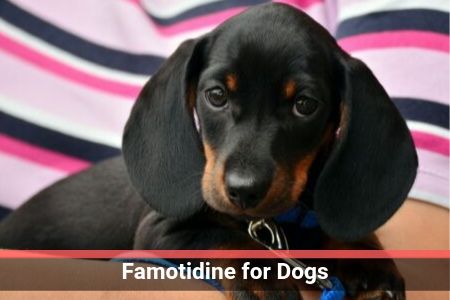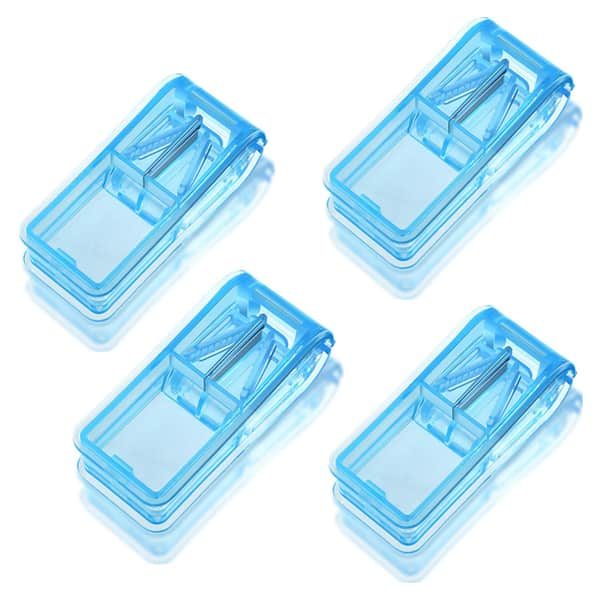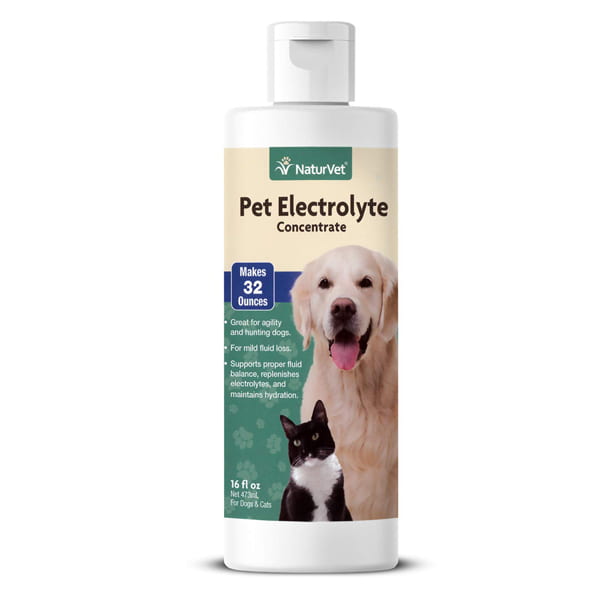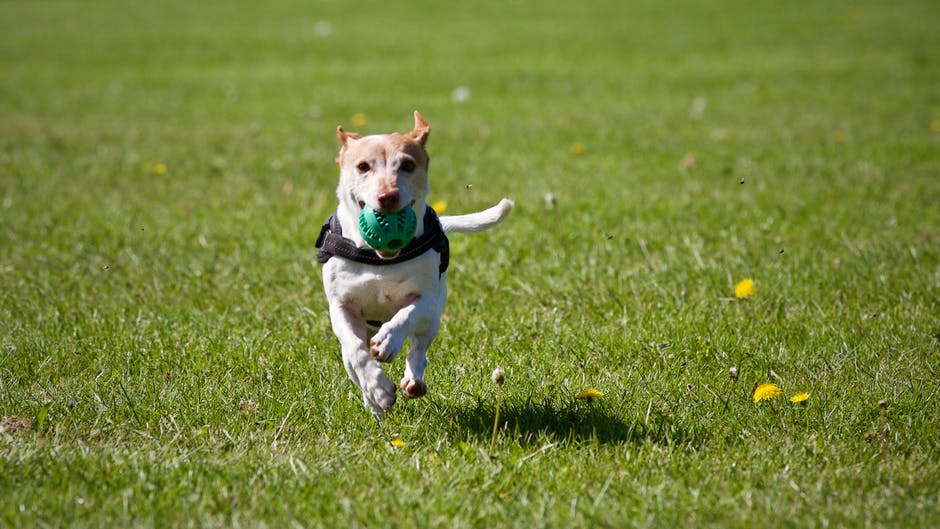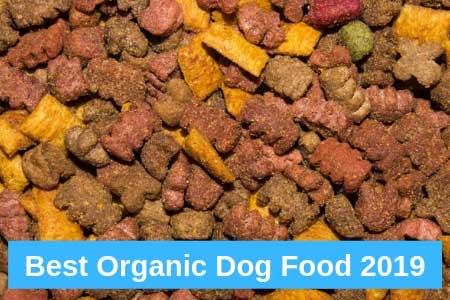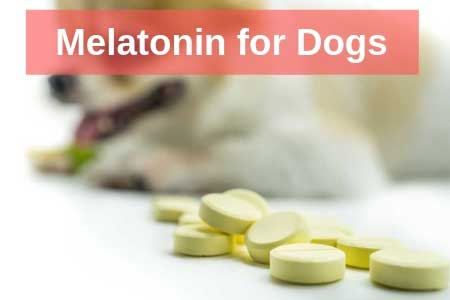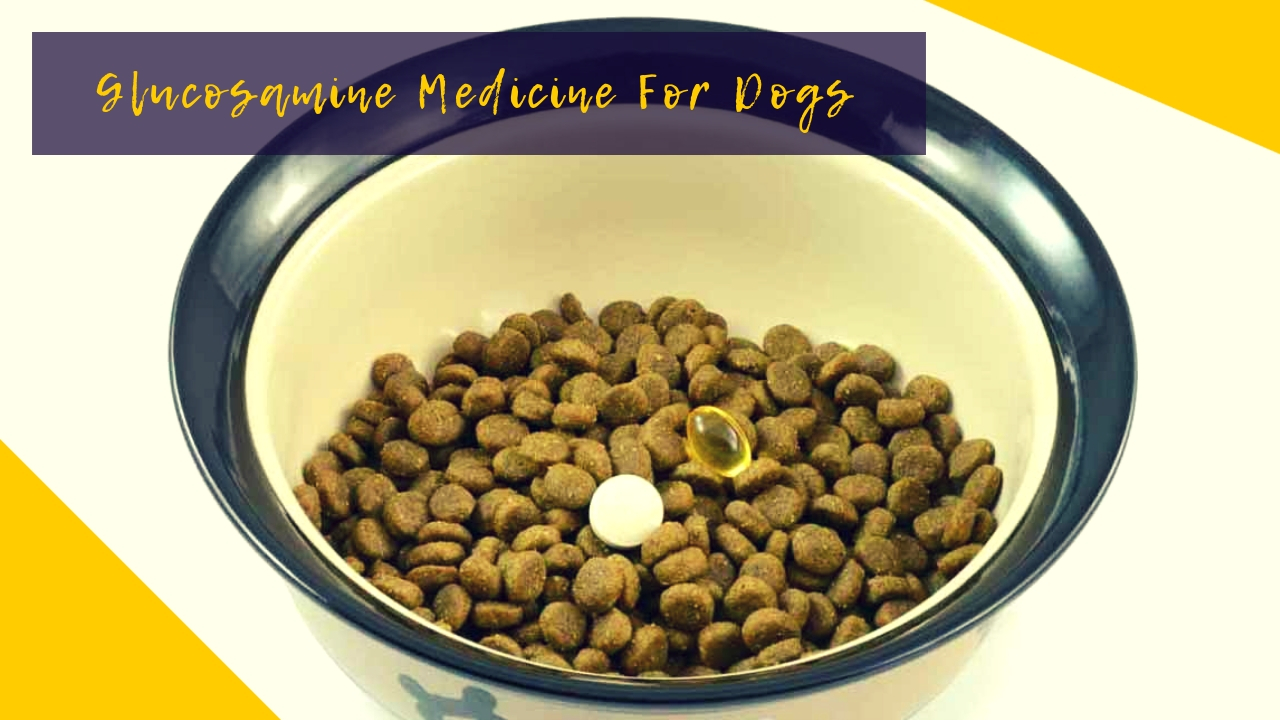There are numerous medications that were originally developed for human use that can be effectively given to dogs and other pets. This is the case with famotidine.
Famotidine is a histamine-2 receptor antagonist (called an H-2 blocker, for short, and sold under the brand name Pepcid). It is used to reduce inflammation in the stomach and esophagus and reduce the effects of gastritis and esophagitis. Sometimes referred to as acid reflux or “heartburn,” these conditions injure the esophagus if not managed over time. H-2 blockers reduce the risk of this damage.
H-2 blockers also decrease excessive histamine secretion triggered by mast cell tumors and might be given to dogs that are battling this issue.
Some pet owners have found famotidine also helps their dogs with bloating and symptoms linked to pancreatitis, which is inflammation of the pancreas. And finally, famotidine might alleviate mild diarrhea that was not caused by a specific medical issue.
Is Famotidine Safe for Dogs?
Famotidine is not FDA-approved for use by dogs or any other animal, but it is one of the most widely prescribed drugs by veterinarians. This is known as off-label use. It is suggested as a course of treatment to relieve stomach acid in both dogs and cats and many pet owners have found it to be extremely effective. Some have found it to be effective for healing stomach ulcers or preventing stomach ulcers from forming.
Famotidine is available over-the-counter (OTC), so it’s possible to buy it without a veterinary prescription. However, you should never give this or any other drug to your dog without first consulting with your vet. Despite many dog owners giving Pepcid AC without a prescription to their pets, and despite nothing bad happening when they do, this doesn’t mean it will be safe for your dog.
Like humans, every dog is different and it’s important for your pet to have a complete medical examination and rule out any serious health problems before administering any medication, whether it’s known to be safe or not.

The H-2 receptors in your dog’s stomach lining produce gastric acid when activated. This is normal, but some dogs experience too much of it or their systems can’t handle it. Famotidine blocks the production of this acid by preventing histamine from binding onto the receptors of the lining so less acid is produced.
The drug does not necessarily stop the root cause of the problem, but it prevents the symptoms from occurring.
You should only give your dog famotidine if advised by a vet. And you should base the dosage you use on your vet’s recommendation. We’ve included recommendations for you here so if you are advised to give a dose that seems different from the usual recommended dose, you can ask your vet for information about why that is the case.
The usual dosage administered to dogs is between 0.25 and 0.5 mg per pound of body weight and it is usually given every 12 to 24 hours.
Most dog owners find they get the best results when they give famotidine to their pet about an hour before they eat, so their stomach is empty and preferably not given with food (though some owners find hiding the pill with a bit of butter or peanut butter doesn’t negate its positive effects. Giving it to your pet on an empty stomach may make the drug more effective.
In most cases, the effects of famotidine are seen within 15 to 30 minutes after administering the drug.
If you miss a dose and notice that you’ve missed it within a few hours you can give your dog the medication. However, you should never double up on doses within a 12 to 24 hour period. You’re better off waiting until the next dose is due and skipping the dose you missed entirely. There are no withdrawal symptoms associated with famotidine use and the worst-case scenario of missing a dose is that your dog might experience some of the symptoms that are usually suppressed by famotidine.

It’s rare, but not impossible, for famotidine to trigger any negative side effects in dogs. The negative side effects that have been reported are usually connected to human use and include:
It is possible to overdose on famotidine. If you notice any symptoms associated with famotidine overdose in your dog you should contact your vet or emergency care immediately. Signs of a famotidine overdose in dogs include:
Animals that are allergic to famotidine should never be given the drug. Signs of an allergic reaction include:
Always store famotidine between 68 and 77 degrees F out of the reach of children and pets.
Is Famotidine Too Risky for Some Dogs?

Though famotidine is typically considered a safe drug to give to dogs, there are instances in which it might not be safe and shouldn’t be given. These contraindications for famotidine use in dogs include:
Like many other drugs, it is possible for famotidine to interact with other drugs your dog is taking. It’s important that you report to your vet if your dog is taking any drugs. Even if your vet prescribed these medications, it’s still a good idea to remind your vet that your dog is taking medication before administering famotidine and ask if there will be any interaction. This also includes natural or herbal remedies or supplements or vitamins you might be giving to your dog.
The most common drugs to trigger a reaction when taken with famotidine include:
If your dog is currently taking any of the above-listed medications, famotidine should be used with extreme caution under the supervision of a vet.
Famotidine is most commonly prescribed to help dogs that are suffering from inflammation in the stomach and esophagus, gastritis and esophagitis, bloating, and pancreatitis.

Inflammation is linked to the body acting to protect itself. Normally, the body's white blood cells and substances they produce are triggered and attack an invader – or perceived invader. In some conditions, such as arthritis, the body's defense system, the immune system overreacts and inflammation occurs. The body acts as if there is a threat when there is not a bacteria or other foreign invader there to fight off. This results in the body’s immune system causing damage to its own tissues. Chronic inflammation is believed to be linked to a variety of diseases and conditions.
Gastritis is the gradual or sudden inflammation, irritation, or erosion of the stomach lining. Left untreated, gastritis can lead to a severe loss of blood and may increase the risk of developing stomach cancer.
Esophagitis is an inflammation of the lining of the esophagus, which is the tube that carries food from the throat to the stomach. Left untreated, esophagitis can become very uncomfortable or painful, trigger problems with swallowing, cause ulcers to develop, and lead to scarring of the esophagus. For some, a condition known as Barrett's esophagus will develop, which increases his or her risk for esophageal cancer.
Bloating or bloat is a serious health issue for dogs. It occurs when a dog's stomach fills with food, fluid, or gas, causing it to expand. The stomach puts pressure on nearby organs, which can cause dangerous problems, including the rotating or twisting of the stomach. Vets call this gastric dilatation-volvulus.
Dogs that are prone to bloating or bloat should be treated with a comprehensive plan that includes:
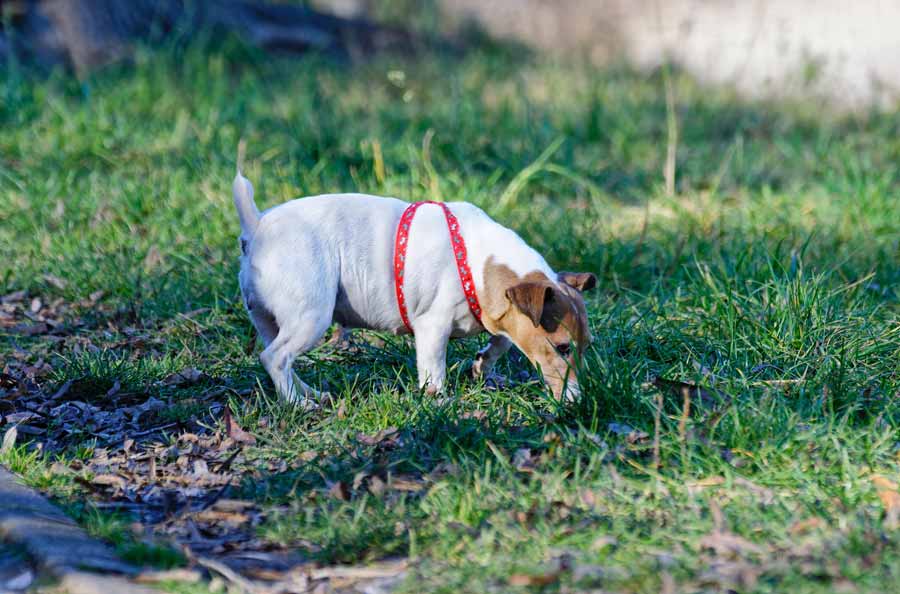
Pancreatitis is a very serious, potentially fatal condition for dogs. It is caused by inflammation of the pancreas. To understand the effects of pancreatitis, it’s important to first understand the role of the pancreas.
The pancreas is responsible for:
Pancreatic damage can happen if digestive enzymes are activated inside the pancreas before being released into the small intestine.
Symptoms of pancreatitis in dogs include:
Some breeds are more prone to pancreatitis, as are dogs taking certain medications or recovering from surgery. Often, meals or treats that are high in fat, like bacon grease or table scraps, tend to trigger pancreatitis.
It’s easy to see why a dog owner would be eager to resolve the symptoms related to these conditions and famotidine can help. However, it might not always be a good idea to give your dog famotidine and you should never give it without speaking to your vet first.
Though typically considered safe, famotidine is not right for every dog and should not be viewed as a long-term solution.
It should be noted that despite the positive effects of using famotidine, long-term use can lower your pet’s intragastric pH level below normal. This can cause gastric contents to injure your dog’s esophagus or trigger other problems. Like many medications, it’s best if famotidine is just a short-term treatment for your pet, but this isn’t always the case. The key to successfully using famotidine is to weight the pros and cons and determine what’s best for your pet on a case-by-case basis.
For some, the risks of long-term use are worth the reward because there are more serious health issues occurring and famotidine makes your dog more comfortable and his or her medical issues easier to manage.
Dogs should never be given famotidine with undergoing an examination by a vet. There’s no denying, it works and it will alleviate gastro-intestinal discomfort, but it’s not the right approach if there is a chance your dog might have an undiagnosed medical condition. In many cases, supplementing your dog’s diet with a quality probiotic could have the same benefits as famotidine and is safer long-term. But every dog is different and it’s important to discuss your dog’s needs with his or her vet.
You should never exceed half a milligram of famotidine per pound of your dog’s body weight per day. Most owners need to cut a 10 mg tablet into halves or quarters and give it to their dog once or twice per day. A pill cutting device ensures you’ll get an even cut and be administering the correct dose to your pet.
You should never give famotidine to a pregnant or nursing dog. The mother will pass along the drug to the puppy or puppies and this could result in an overdose.
Dogs with heart and liver disorders should also not be given famotidine.
It’s important to identify the cause of your dog’s digestive distress because it can help you develop the most effective and least risky treatment plan. Some of the reasons dogs experience esophagitis include inflammation, acid reflux, upset stomach, and GERD. In some cases, these conditions are triggered by overeating or eating too quickly.
Dogs that tend to root through and eat trash tend to have problems linked to gastrointestinal imbalance. Anything new introduced into your dog’s system can trigger these symptoms, which is why it is so important to feed your dog a consistent diet and carefully introduce new foods.
If your dog is vomiting it could be a sign of something more serious. Your vet should test for worms and rule out parvovirus.
Famotidine should never be seen as a cure-all, despite it having the ability to significantly reduce symptoms. It should be treated, in most cases, as a temporary fix and the goal should be to take a more holistic approach to deal with your dog’s digestive distress.
If your dog is vomiting, it’s important to take a comprehensive approach to treatment. Never give famotidine without first speaking to your vet. The usual course of treatment for vomiting is fasting from food for a period of time and then introducing only bland foods back into your dog’s diet for a period of time. Make sure that in addition to fasting and then eating bland foods that your dog is getting enough water.
Dehydration is a serious concern with all vomiting dogs and can be especially problematic when a dog is taking famotidine. If you suspect your dog might be dehydrated, it's important to seek medical attention. IV hydration fluids are inexpensive and very effective for helping your dog stay hydrated when he or she is ill. Famotidine offers no hydration support, so it shouldn’t be seen as a simple fix for vomiting or diarrhea. Instead, it needs to be used in conjunction with other therapies.
The best thing you can do when your dog seems to be ill or is dealing with a chronic condition is to work with your vet to develop a safe and effective long-term treatment plan. In some cases, this might include giving your dog a daily or twice-daily dose of famotidine. There are some situations in which the risks of using famotidine on a long-term basis are outweighed by the benefits. This is often the case when your dog is dealing with a serious medical issue or disease that is trigger gastrointestinal symptoms. If the goal is to keep your pet comfortable and eating for as long as possible, famotidine can make life more bearable for you and your pup.
It is important to note that a comprehensive treatment approach is almost always better than masking symptoms. Knowing why your dog is suffering from gastrointestinal distress if the first step in treating it properly. Never give your dog famotidine or any other medication without first consulting your vet.

